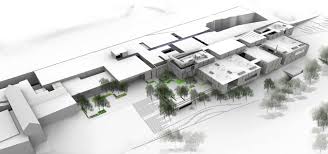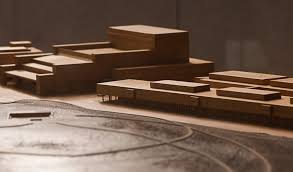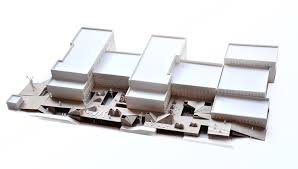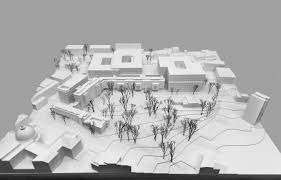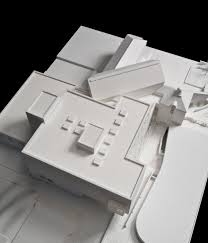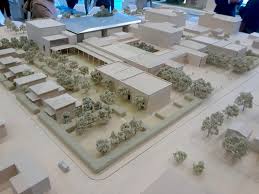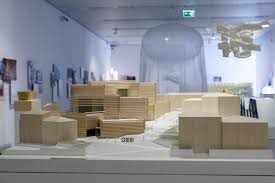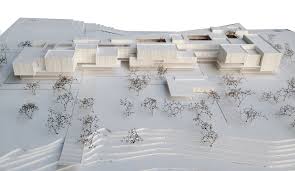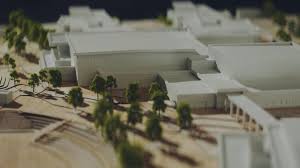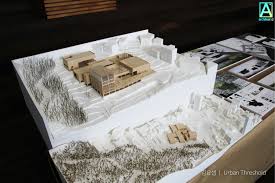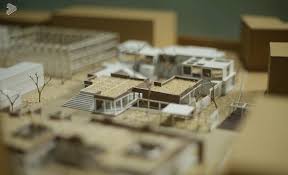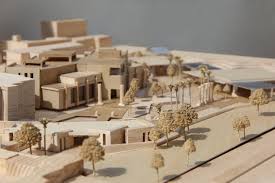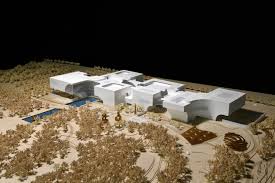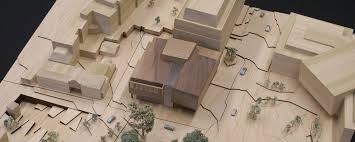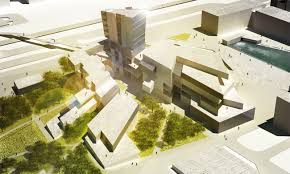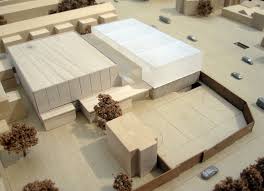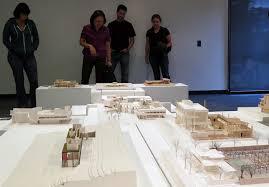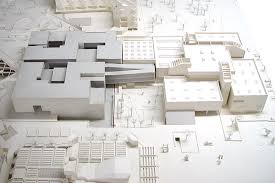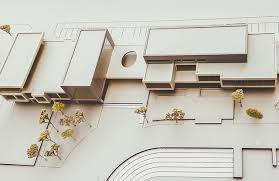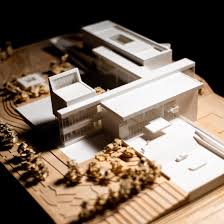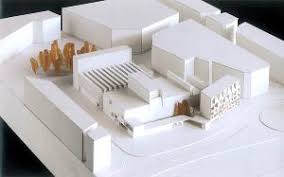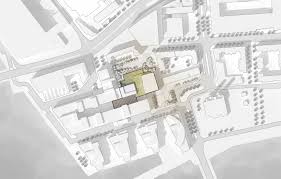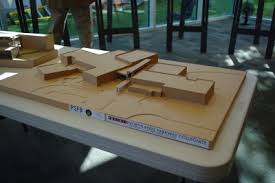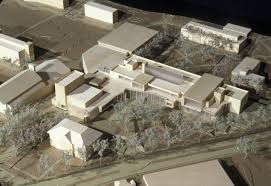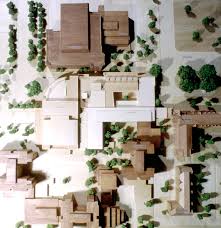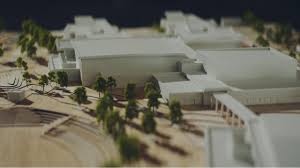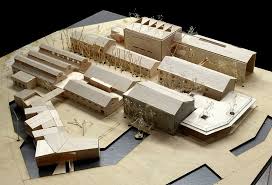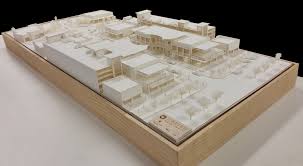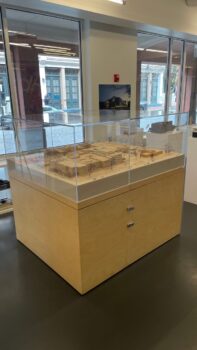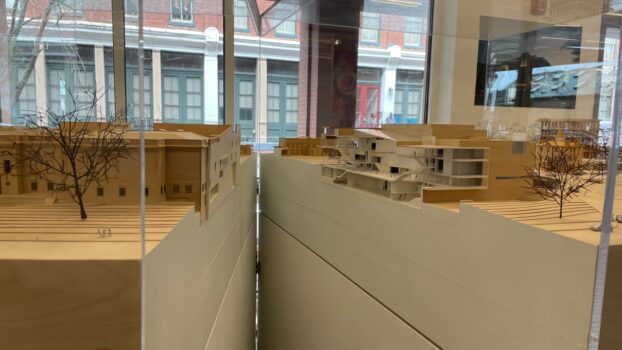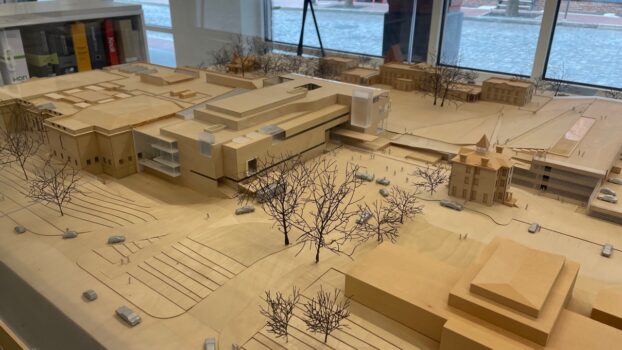A Fine Quality Detailed Architectural Moden made by Rick Mather Architects in London in 2010, made in Balsa Wood to Generate the 200 million dollar expansion of the VMFA in Richmond, VA
This report is designed to provide a professional appraisal of the specific item requested. It contains a detailed description and evaluation of the item, as well as information about the valuation method used. The value given in this appraisal report is applicable only to the item in question and should not be interpreted as a general valuation for any similar items. Values for similar items can vary significantly, ranging from one hundred to one hundred thousand US dollars, depending on subtle details.
This report is intended to give the owner an appraisal of their item’s value, whether it is furniture, china, glassware, or any other type of antique or collectible item. The information provided will help the owner to understand their piece and its value. Furthermore, it provides an appraisal value in US dollars, as well as advice on how to proceed if the owner wishes to sell the item. It should be noted that this report is not intended to encourage the owner to sell their antique item; instead, it seeks to provide information on its value so that the owner can make an informed decision.
Description, identification, provenance reconstruction, age estimation, style and similar items used for comparison.
Identification
When appraising a specific antique item from a photograph, there are many factors and methods an appraiser can use to determine the nature and authenticity of the piece. These factors may include design, materials, craftsmanship, and historical context. For example, when appraising an architectural model made by Rick Mather Architects in London in 2010, made in balsa wood to generate the 200 million dollar expansion of the VMFA in Richmond, VA, the appraiser would begin by carefully examining the photograph. It is important to note the details of the design, such as the materials used, the construction techniques, and any unique features that may be present. The appraiser will also take into consideration the historical context of the item, such as the time period in which it was made, the purpose for which it was made, and the place of origin. This information can be used to accurately identify the item and to determine its authenticity. With these factors and methods, the appraiser can make an informed decision about the value of the item and its authenticity.
Provenance
When determining the provenance of a specific antique item, an appraiser must consider a variety of factors, such as design elements, craftsmanship, historical context, and available documentation. In the case of a Fine Quality Detailed Architectural Model made by Rick Mather Architects in London in 2010, made in Balsa Wood to Generate the 200 million dollar expansion of the VMFA in Richmond, VA, the appraiser can consider the design elements of the item, such as the size, scale, materials, and colors used. The craftsmanship of the model must also be examined, including the level of detail and any unique features that could reveal the origin or purpose of the item. Additionally, the appraiser must consider the historical context of the model, such as the time and place in which it was made, as well as any available documentation related to the item, such as an invoice or certificate of authenticity. By considering all of these factors, an appraiser can accurately determine the provenance of a specific antique item.
Age
When determining the age of an antique item, I consider a variety of factors including construction techniques, materials used, design elements, and historical context. With regards to the Fine Quality Detailed Architectural Model made by Rick Mather Architects in London in 2010 and made in Balsa Wood to generate the 200 million dollar expansion of the VMFA in Richmond, VA, I would examine the construction techniques used to create the model. Balsa wood is a soft wood, and is not commonly used for architectural models; this suggests that the model is a relatively modern construction. Additionally, I would consider the design elements of the model, particularly its detailing. The level of detail in the model, as well as its accuracy, can often provide clues as to its age. Finally, I would examine any available documentation or markings on the item that could provide clues to its age, such as manufacturer’s marks, dates of production, or other historical context. In this case, the model was produced in 2010 and the designer, Rick Mather Architects, is a well-known and respected contemporary architect. All of these factors help to determine the age of the antique item and provide a more accurate appraisal.
Style
This architectural model represents the modern style of the early 21st century, characterized by sleek and streamlined design elements. The use of balsa wood as the primary material reflects a commitment to sustainable and eco-friendly practices, a defining characteristic of modern architecture. The intricate detailing and precise craftsmanship of the model showcase the influence of technology and the use of advanced techniques in modern design. The incorporation of architectural motifs, such as clean lines and geometric shapes, further emphasize the modern aesthetic. This item also holds historical significance as it was created for the expansion of the Virginia Museum of Fine Arts, a cultural institution dedicated to showcasing contemporary art and design. Overall, this architectural model exemplifies the innovative and forward-thinking nature of modern design and its impact on the cultural landscape.
Similar Items Used for Comparison Purposes
Comparable sales information, including prices realized at recent auctions or private sales of similar items
In order to provide an up-to-date estimate of the fair market value for the item, I utilized the data collected, including auction prices, private sale prices, and other relevant market information. This is crucial as it can be used in various contexts such as insurance, estate planning, and art market analysis. It also offers a valuable insight into how the valuation of the item may have changed due to environmental or economic factors.
The auction prices and private sale prices were a significant factor in determining the current market value of the item, as they are based on actual transactions between buyers and sellers in the market. As such, they are a strong indicator of the expected value of the piece in the near future. By analyzing auction results and private sale prices from the last 6 months, I was able to accurately determine the current fair market value of the item.
This approach provides a comprehensive view of how the value has changed over time and gives insight into any potential areas of appreciation or depreciation in its price. Additionally, it allows me to adjust my valuation as new auction prices and private sale prices become available.
Conclusion
This architectural model represents the modern style of the early 21st century, characterized by sleek and streamlined design elements. The use of balsa wood as the primary material reflects a commitment to sustainable and eco-friendly practices, a defining characteristic of modern architecture. The intricate detailing and precise craftsmanship of the model showcase the influence of technology and the use of advanced techniques in modern design. The incorporation of architectural motifs, such as clean lines and geometric shapes, further emphasize the modern aesthetic. This item also holds historical significance as it was created for the expansion of the Virginia Museum of Fine Arts, a cultural institution dedicated to showcasing contemporary art and design. Overall, this architectural model exemplifies the innovative and forward-thinking nature of modern design and its impact on the cultural landscape.
Appraisal Value ($)
$9,000-10,000.
Appraisal Report made by:
Andrés Gómez
BSc, MSc, Expert Art Appraiser
10+ years of experience in online antique and collectible appraisals.
100k+ Customers Served.
Antique Store Owner.
You can check my portfolio of past appraisals here:
https://www.appraisily.com/andres-portofolio/
Signature:

We have Experts online now.
Pictures received.
Custom made Ad Copy Text
This exquisite antique piece is a unique collector’s item from the renowned Rick Mather Architects studio in London. The detailed architectural model was made in 2010 for the 200 million dollar expansion of the Virginia Museum of Fine Arts in Richmond, VA. Constructed from balsa wood, this model is a true work of art, showcasing the craftsmanship and skill of the studio’s artisans. With its intricate details and incredible visual appeal, this piece is a rare find and a true testament to the capabilities of modern architecture. It is sure to be a stunning addition to any collection.
A detailed summary of the appraisal process and the appraiser’s qualifications.
Mark-to-market appraisal is a vital method for determining the current value of an item. This form of valuation requires an appraiser to consider various factors, such as market conditions, the condition and age of the item, and its rarity. By taking all these elements into account, a mark-to-market appraisal delivers an accurate assessment of an item’s current market value.
The item’s rarity, as determined by its availability and demand, is also considered in mark-to-market appraisal. Appraisers use this information to determine if the value of a piece is likely to increase or decrease over time. Additionally, they will inspect the condition of the item and note any signs of wear or damage that might affect its future resale value.
When performing mark-to-market appraisals, appraisers also consider market conditions by researching current market trends and comparable items that have recently sold. This information is used to provide an estimate of an item’s worth at that point in time. By considering all of these factors, mark-to-market appraisal is able to give a reliable indication of the current value of an item. This kind of valuation can also ensure fair prices are paid and received when buying or selling items.
In summary, mark-to-market appraisal is a crucial tool for determining the true value of an item, enabling buyers, sellers, and appraisers to make informed decisions regarding its worth. It takes into account multiple aspects to provide an accurate assessment of the current market value of an item. This information can be used to ensure that buyers and sellers are getting a fair price for the item, and that the appraiser’s valuation is up-to-date and reflective of current market conditions.
In the case of insurance replacement appraisals, mark-to-market appraisals can also be used to accurately estimate the cost of replacing a lost or damaged item. The current value, as determined by the appraisal, is then used to determine the amount that the insurance company will pay back to the policyholder. This way, policyholders can rest assured that they will receive an appropriate sum for any item that needs to be replaced due to accidental damage or theft. Additionally, this kind of valuation helps insurers ensure they are not being overcharged when items need to be replaced as part of a claim settlement.
The appraisal process is a thorough evaluation of the item or items in question. It involves researching and analyzing the information provided by the requester in order to provide an accurate estimate of its value. The appraiser takes into account factors such as condition, rarity, demand, and market prices. Photographs and detailed descriptions are especially important when providing an appraisal, since they help the appraiser identify any potential flaws or defects that could affect the item’s worth. By using all the resources that are available, an evaluation can be done quickly, efficiently, and with a high level of accuracy.
A statement of the appraiser’s liability and any potential conflicts of interest.
A qualified appraisal, also known as a formal written evaluation, is a professional assessment of the monetary value of an item by an individual who has specialized knowledge, expertise, and training in the field of appraisals. This person must meet certain educational and professional requirements, including experience in researching and evaluating items, as well as knowledge of the market and current market trends. The purpose of a qualified appraisal is to provide an objective and unbiased opinion of the value of an item for various purposes, including insurance claims, tax planning, estate planning, or to help determine a fair price for a sale or purchase.
We are committed to providing our clients with the most accurate and unbiased appraisal reports. To ensure impartiality, we adopt a flat rate, fixed fee structure for all appraisals, instead of a percentage-based fee. This eliminates any potential conflicts of interest between the appraiser and the final report value. Our appraisal reports are in compliance with the Appraisal Foundation’s USPAP (Uniform Standards of Professional Appraisal Practice) standards and guidelines, which are widely accepted as the ethical and performance standards for appraisers. This guarantees that our reports are of high quality and legally defensible.
